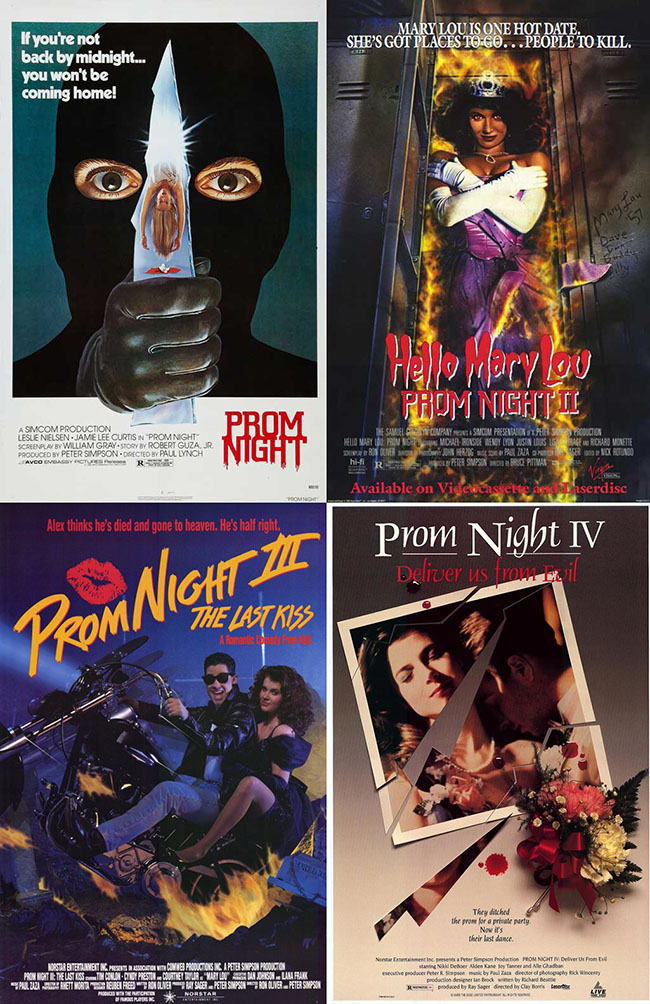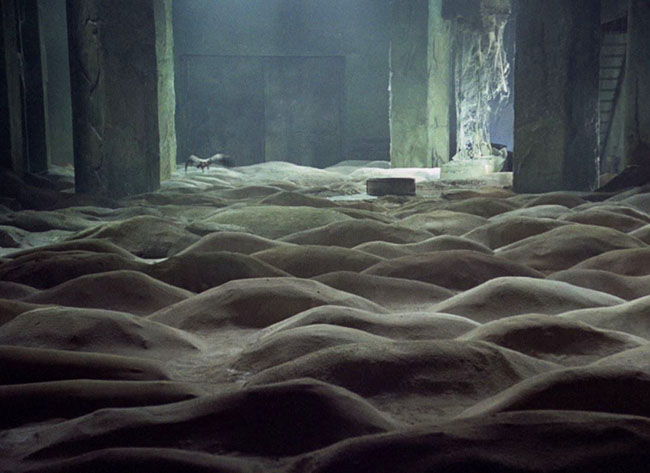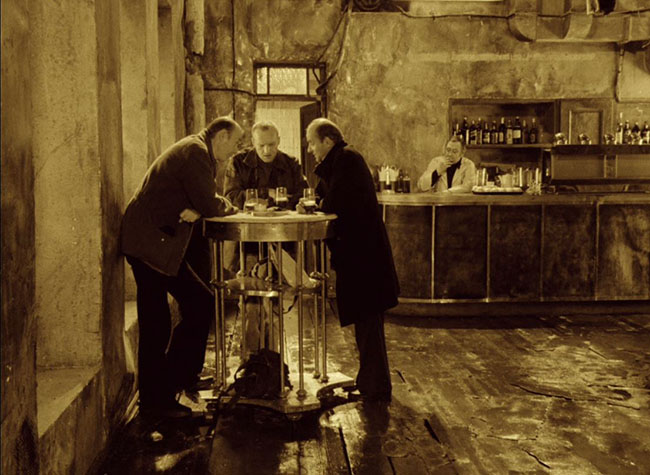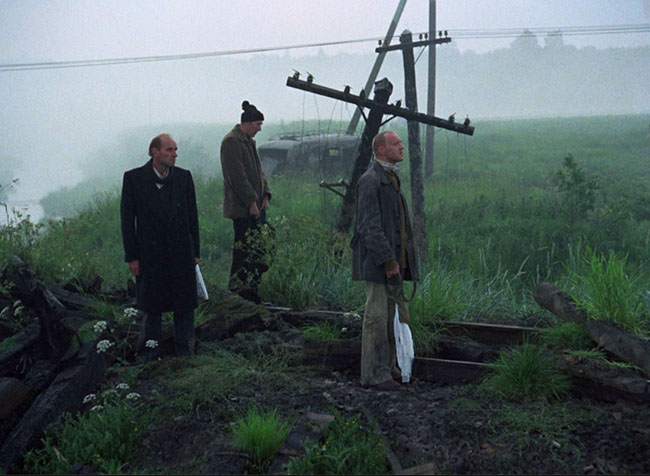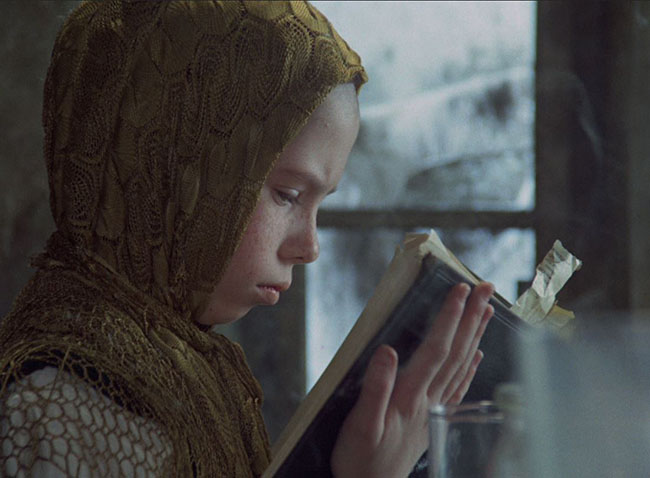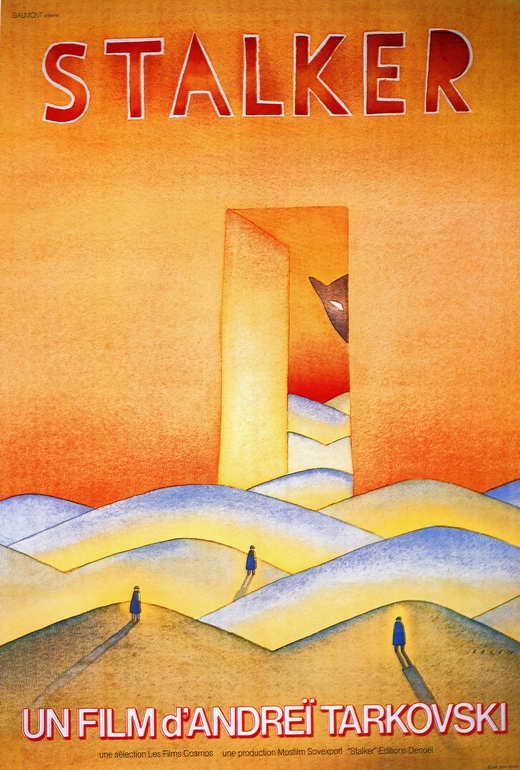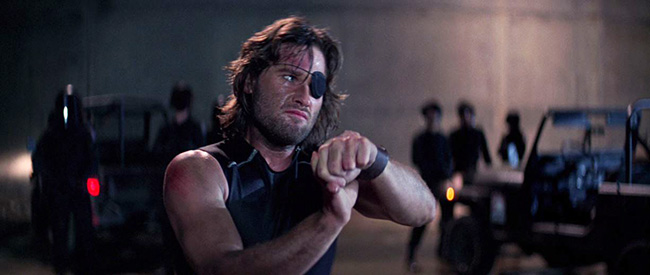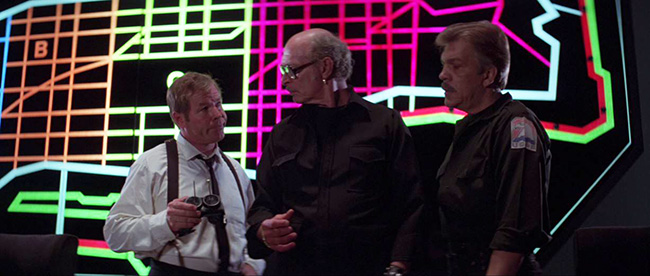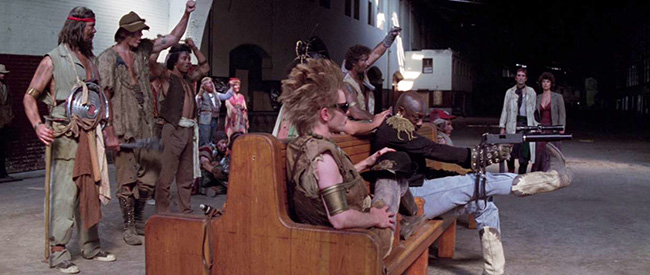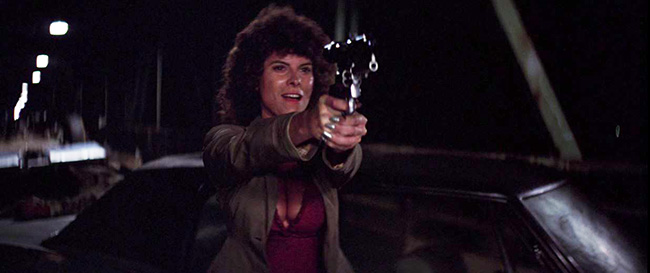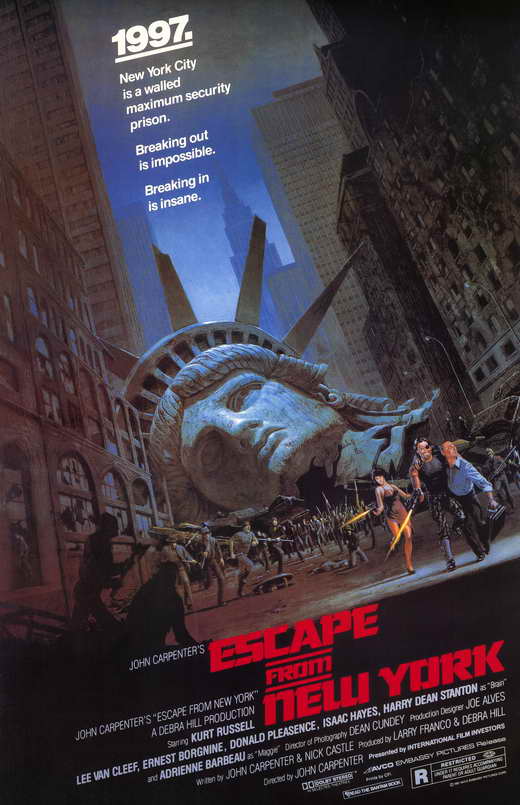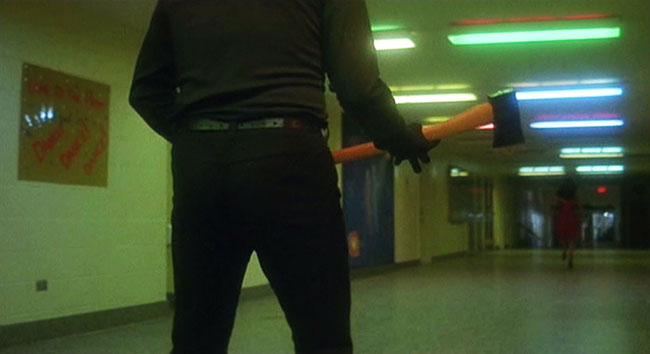
Without a doubt one of the strangest of the slasher film cycles is the Prom Night series, which kicks off with a decent, by-the-numbers genre entry, stalls out, unexpectedly resurrects itself, plunges into horror-comedy, and doubles back to slasher while almost completely abandoning the core “prom night” concept. Inevitably it would be rebooted (and quickly forgotten) as a 2008 nostalgia horror remake, but for our purposes we’ll pretend that never happened. The series is centered on Hamilton High School, a setting rife with teenage slayings and demonic invasions. In Prom Night (1980), shot in Toronto, we’re introduced to a group of young children playing an ominous game of hide-and-seek in a derelict convent. There are heavy overtones here of the evil-children subgenre as they chant “Kill! Kill!” and eventually corner poor Robin Hammond, who, retreating from their taunts, falls backward through a window to her death. The kids decide to say nothing of the accident. Six years later, the little bullies have grown into high school teenagers preparing for the big prom: Wendy (Eddie Benton, aka Anne-Marie Martin, future wife of Michael Crichton), Jude (Joy Thompson), Kelly (Mary Beth Rubens), and Nick (Casey Stevens). Also critical to the forthcoming prom night mayhem are the two surviving Hammond siblings, popular girl Kimberly (Jamie Lee Curtis) and withdrawn Alex (Michael Tough), still grieving for their lost sister all these years later along with their father (Leslie Nielsen). But a psychopath has escaped from an insane asylum, chased by a police lieutenant (George Touliatos) – who comes to believe that the lunatic is targeting the high school.
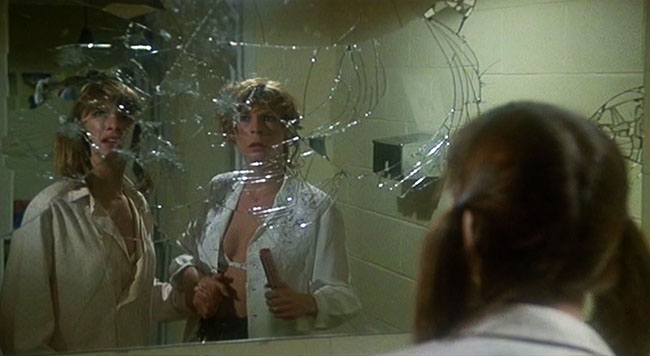
Kelly (Mary Beth Rubens) and Kim (Jamie Lee Curtis) discover that they’re not alone in the locker room.
Despite the convoluted set-up – with some very jarring editing in the early going as director Paul Lynch (Humongous) cuts back and forth between the teenagers and the manhunt for the escaped inmate – Prom Night eventually reveals itself to be a very straightforward blend of Halloween (1978) and Carrie (1976). To the latter, you have Wendy and school dropout Lou – David Mucci, doing his best John Travolta – plotting to humiliate the prom queen, as well as the overall structure of using the crowning of prom king and queen as the trigger to a climax of bloodshed. But the Halloween influence is obvious in the presence of Jamie Lee Curtis, still in her nascent career phase of scream queen: The Fog and Terror Train were released the same year. Curtis gets to show off her dancing moves here, as Hamilton High’s prom night has a disco theme – and she, too, gets to do her best John Travolta, as the generic made-to-order song “Prom Night” blasts on the soundtrack. What makes Prom Night stand out as a horror film is its embracing of the high school setting, with teens being chased down high school corridors and through classrooms, and the fact that the mysterious killer is not an invincible supernatural being, but someone who trips, stumbles, and misses – and eventually is revealed to be someone with a surprising amount of emotional vulnerability. Yes, you will figure out the killer’s identity pretty early on, despite the multiple red herring characters. The tagline is slasher-wonderful: “If you’re not back by midnight…you won’t be coming home!”
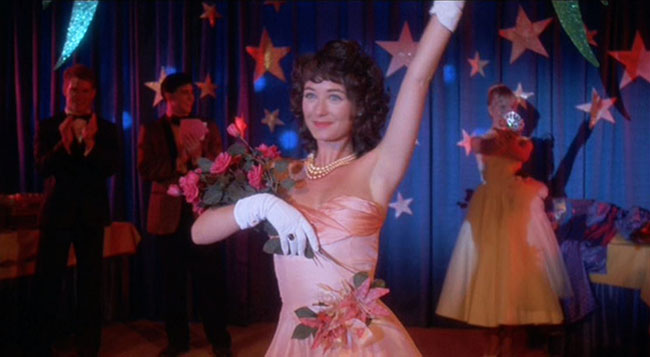
Mary Lou Maloney (Lisa Schrage) in 1957: “Hello Mary Lou: Prom Night II.”
The story goes that Hello Mary Lou: Prom Night II (1987), directed by Bruce Pittman (Mark of Cain), wasn’t originally intended to be a sequel to Prom Night, which explains why it…isn’t, really. It’s another Canadian horror film with a school setting, and shares Prom Night‘s executive producer Peter R. Simpson, but having the same high school name in the script was a coincidence, as Phil Castor notes in his appreciation at Blumhouse. Pittman’s film was a supernaturally-themed slasher with no story threads connecting it to the original film. In 1957, promiscuous prom queen Mary Lou Maloney (Lisa Schrage) is accidentally burned alive right after receiving her tiara – a Carrie-like prank gone lethally awry. Thirty years later, her spirit is reborn when shy high school student Vicki (Wendy Lyon) discovers a chest containing Mary Lou’s prom dress and crown. Bent on vengeance for her mistreatment in 1957, Mary Lou begins taking possession of Vicki and attacking her friends. The only ones who understand what’s happening are two men complicit in the events of 1957: Buddy Cooper (Richard Monette), now a priest, and Bill Nordham (the always-welcome Michael Ironside), school principal. Meanwhile, Nordham’s son Craig (Justin Louis) tries to save Vicki’s soul from the grip of the demonic Mary Lou.
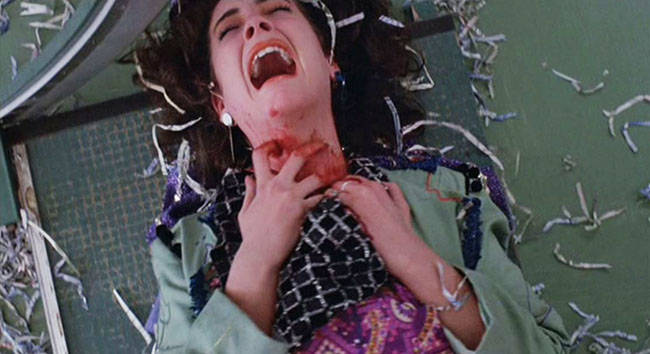
Jess (Beth Gondek) is threatened by a possessed paper cutter in “Prom Night II.”
Here’s a secret: Prom Night II, though not terribly original, is one of the most fun horror films of the 80’s. As with Fright Night (1985), the FX-driven horror and teenage humor are perfectly balanced. The characters are certainly high school stereotypes, but the self-aware script plays this up for genuine laughs rather than settling for the kind of smug, irony-based humor that would come into vogue post-Scream. Vicki’s transformation from wide-eyed wallflower to she-demon is played to the hilt by Lyon, culminating in an attempted lesbian seduction in the locker room that is sexy and outrageous before it becomes absurdly, stupidly, wonderfully grisly, a splatter of an exclamation point. But even the smaller interactions are scripted to perfection (with credit to writer Ron Oliver), as when Vicki’s friend Monica (Beverley Hendry) complains to her:
Monica: The prom’s like a week away, and I don’t have a date.
Boy: Excuse me, Monica, could I speak to you after school?
Monica: Get lost, asshole. (To Vicki) So why don’t guys ask me out?
Most of all, the film is lively. One victim is almost decapitated by a possessed paper cutter before she’s hanged and then, for good measure, thrown out the window. Another is electrocuted by his computer after he tries to doctor the prom voting results. At one point, Vicki seduces her father before her mother walks in. There’s a demon rocking horse. The climax takes place in Hell. Prom Night II gives you a lot to take in.
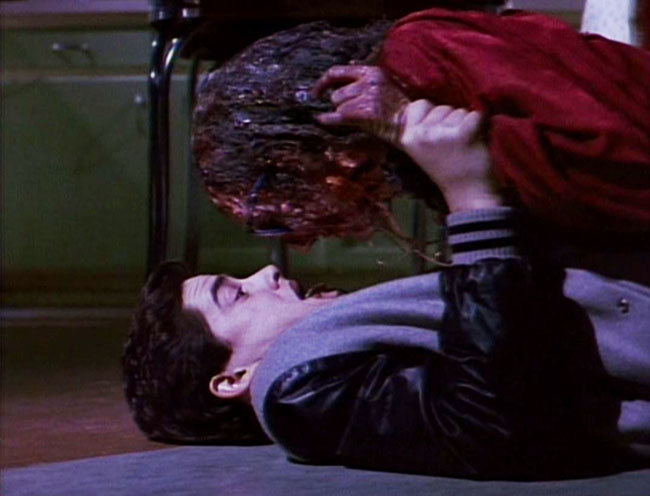
The undead Mary Lou gives high school student Alex (Tim Conlon) major relationship problems in “Prom Night III: The Last Kiss.”
I vividly remember the heavy marketing campaign for Prom Night II, with frequent TV commercials that cashed in not so much on the original film but this new movie’s Nightmare on Elm Street vibe, Mary Lou sold as the next Freddy Krueger. Though the film was heavily reshot and bears little resemblance to the Jamie Lee Curtis original, it’s slickly produced, Halloween-ready horror that burns bright with wit. By contrast, Prom Night III: The Last Kiss (1990) – which only received a brief and limited theatrical release – is a major step down and arguably the worst in the series. This shouldn’t have been the case. Both films share the same screenwriter, Ron Oliver – who now co-directs alongside series co-producer Peter R. Simpson – and the story is filled with promise. Mary Lou Maloney (now played by Courtney Taylor) rises up from Hell to make a mess of the life of high schooler Alex (Tim Conlon). She quickly seduces him and usurps his girlfriend (Cynthia Preston), but can’t stop murdering teenagers, with Alex left to hide the bodies at night by digging graves in the football field. It’s a clever premise, but Oliver’s script seems to drop a few IQ points, with the broad, groan-worthy jokes a bit closer to what you’d find in a Troma movie (I kept wondering if we’d find out that Hamilton High is in Tromaville). Most distracting are the considerably lower production values, including amateurish special effects and a very rushed-looking Hell-set climax that compares poorly with the previous film’s. It has the feel of a TV movie, despite a few gore setpieces, some of which are illogical to the point of distraction (the school principal cutting off his own finger during a ribbon-cutting ceremony; a teacher’s hands impaled by ice cream cones). The ending is ridiculously abrupt; try not to damage your TV set as you throw things at it.
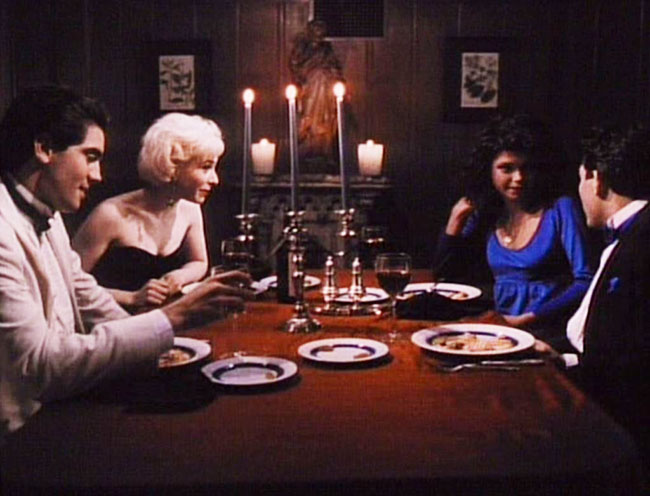
In “Prom Night IV: Deliver Us from Evil,” four teenagers skip prom for a cabin in the woods.
The straight-to-video Prom Night IV: Deliver Us from Evil (1992) tries to act as a course correction, while not even being anywhere near the road. A prologue returns us, promisingly, to the 1957 Hamilton High prom, but now follows a new character, Father Jonas (James Carver), who murders teenagers engaged in premarital sex. Jonas is confronted by his fellow priests, who become convinced that he’s been possessed, notwithstanding his spontaneous stigmata. With their exorcism rites failing, they choose to imprison him in the basement of a church for 30+ years, and I wasn’t raised Catholic, so I’ll just assume this is a normal thing to do. A new priest, Father Colin, is asked to watch over the cell-bound Jonas and given explicit instructions. (Father Colin is played by Canadian actor Brock Simpson, who grew up with the series, appearing in Prom Night and Prom Night II.) On the inevitable prom night, two high school couples (Nicole de Boer, J.H. Wyman, Joy Tanner, and Alle Ghadban) ditch the festivities for a limo, bound for a remote cabin in the snowy woods for drinking and sex. But Jonas has escaped his confinement and has followed them to the cabin, ready to punish them for their sins.
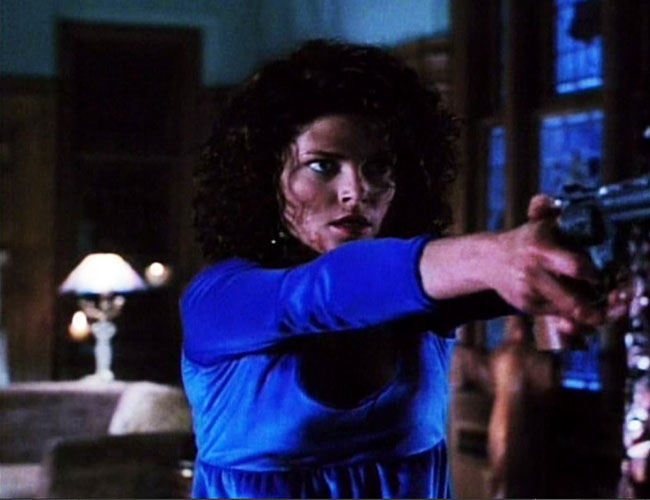
Meagan (Nicole de Boer) fights back against a deranged priest in “Prom Night IV.”
Prom Night IV is a typical slasher film, albeit with the oddball Exorcist slant that is never properly explained nor satisfyingly resolved. When the teens settle into the cabin, everything goes exactly as you’d expect. As direct-to-video, early-90’s horror it’s just fine, neither awful nor (at all) good; the only shot that I found particularly effective was the reveal of Jonas’s victims nailed to burning crosses, one of the burned-up bodies crumbling to the snow. The actresses pose in lingerie like a 1992 Cinemax movie, and one of them receives a nude body double scene that’s hilariously unconvincing. This is a stealth Christmas movie, but it’s no Black Christmas. It brings the series to an unexpected conclusion – with a high school prom movie that doesn’t bother with the high school and doesn’t show us the prom. So while I consider this a notch better than Prom Night III, the merits are purely technical (body double scene notwithstanding). If the slasher genre was about to turn to parody and self-commentary, it’s movies like Prom Night IV that provided the justification. But the series as a whole charts the course of horror from the early 80’s to the early 90’s, from drive-ins to video stores, from sincere teen-based shockers through colorful tongue-in-cheek gorefest to, finally, a dead end and a need for reinvention. That’s one cold, lonely cabin where the series goes to die; give me instead the authentic high school halls, the stress of finding the perfect date for prom, and the line which keeps popping up through the whole run: “It’s not who you go with. It’s who takes you home.”
